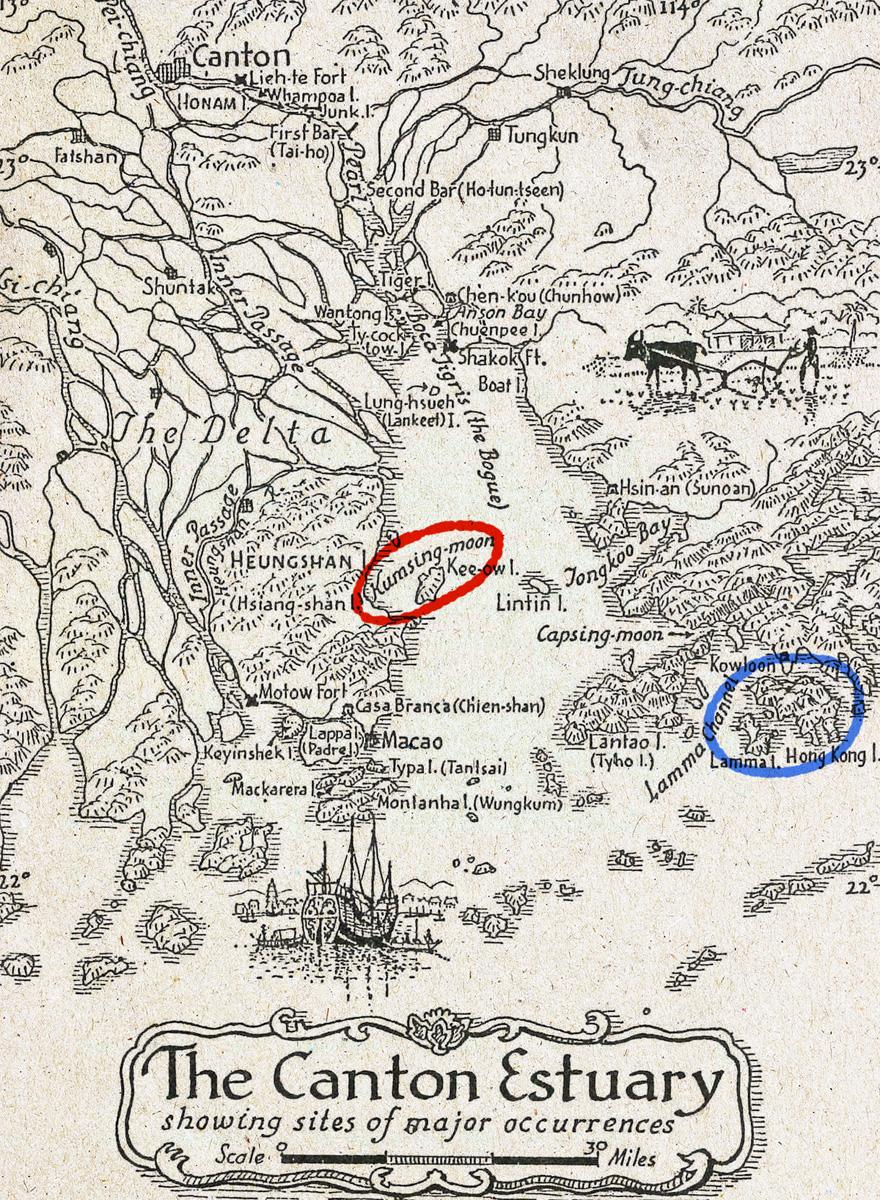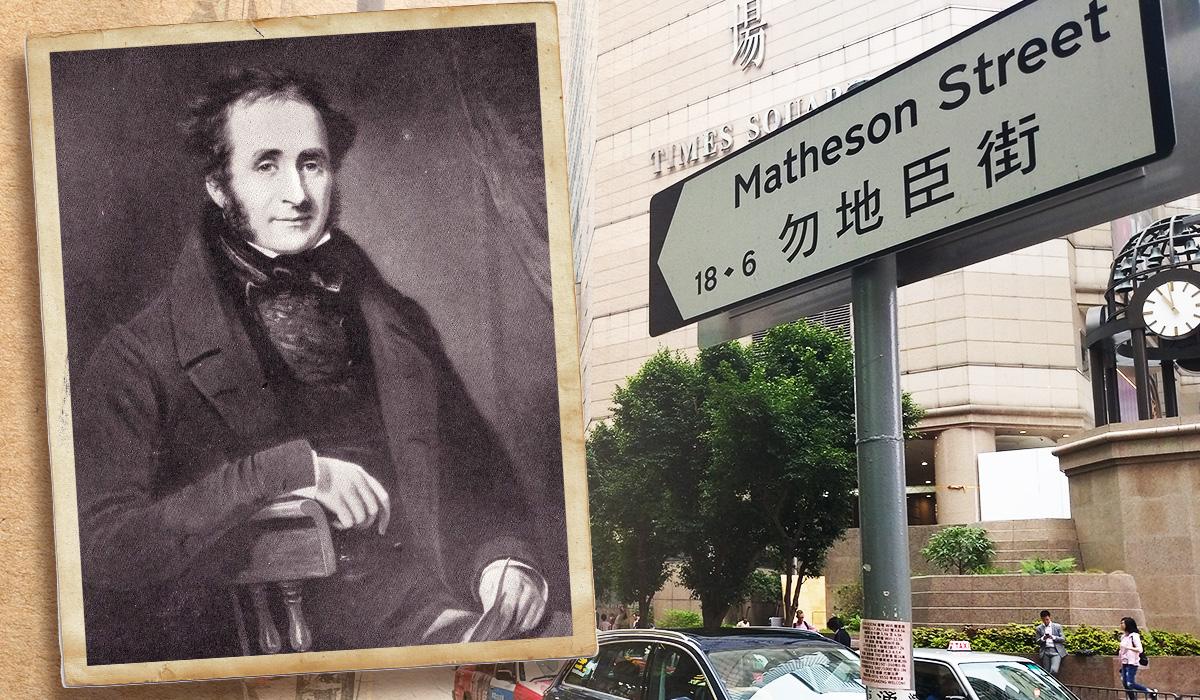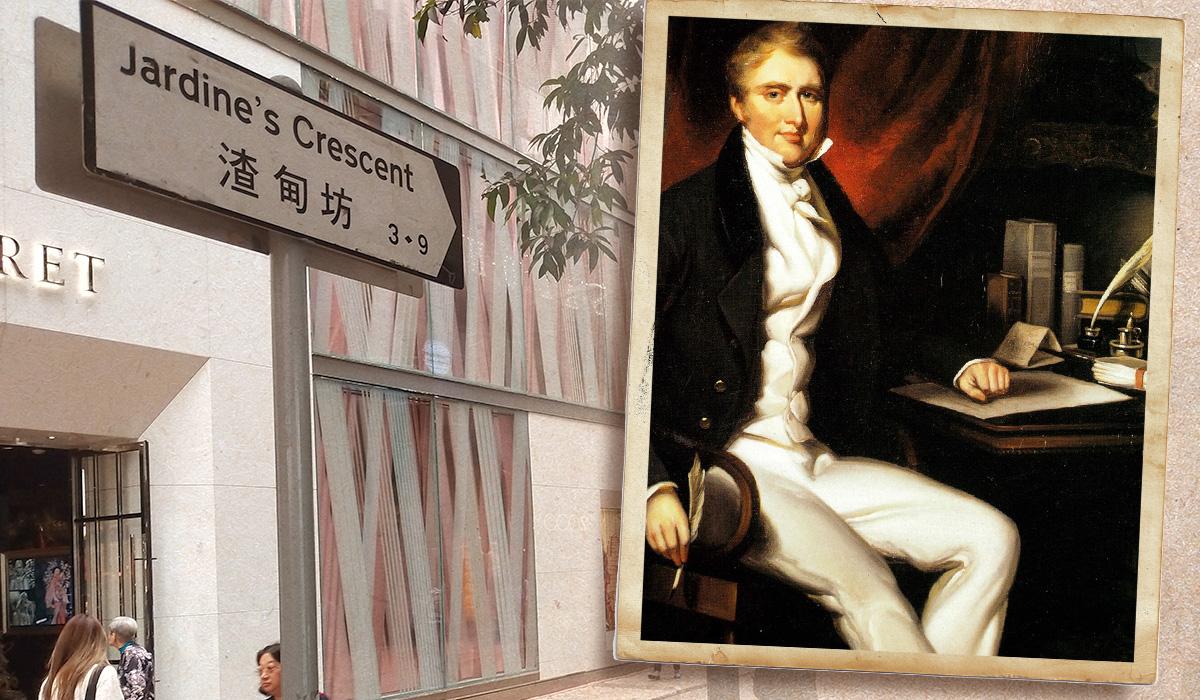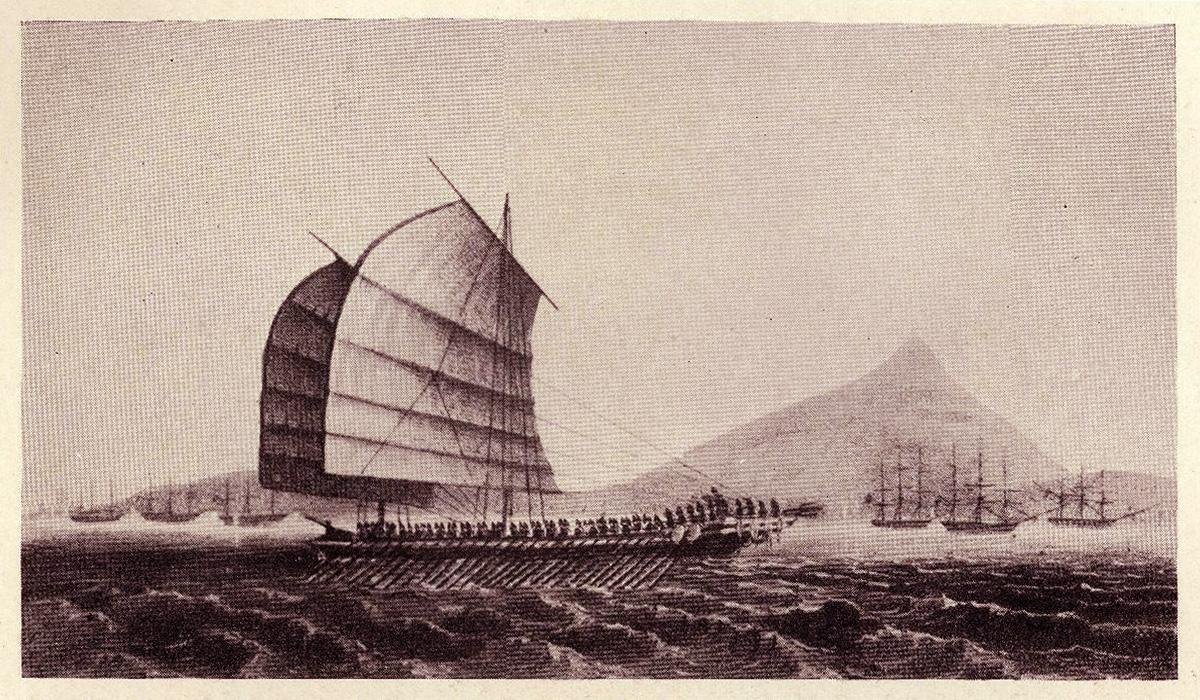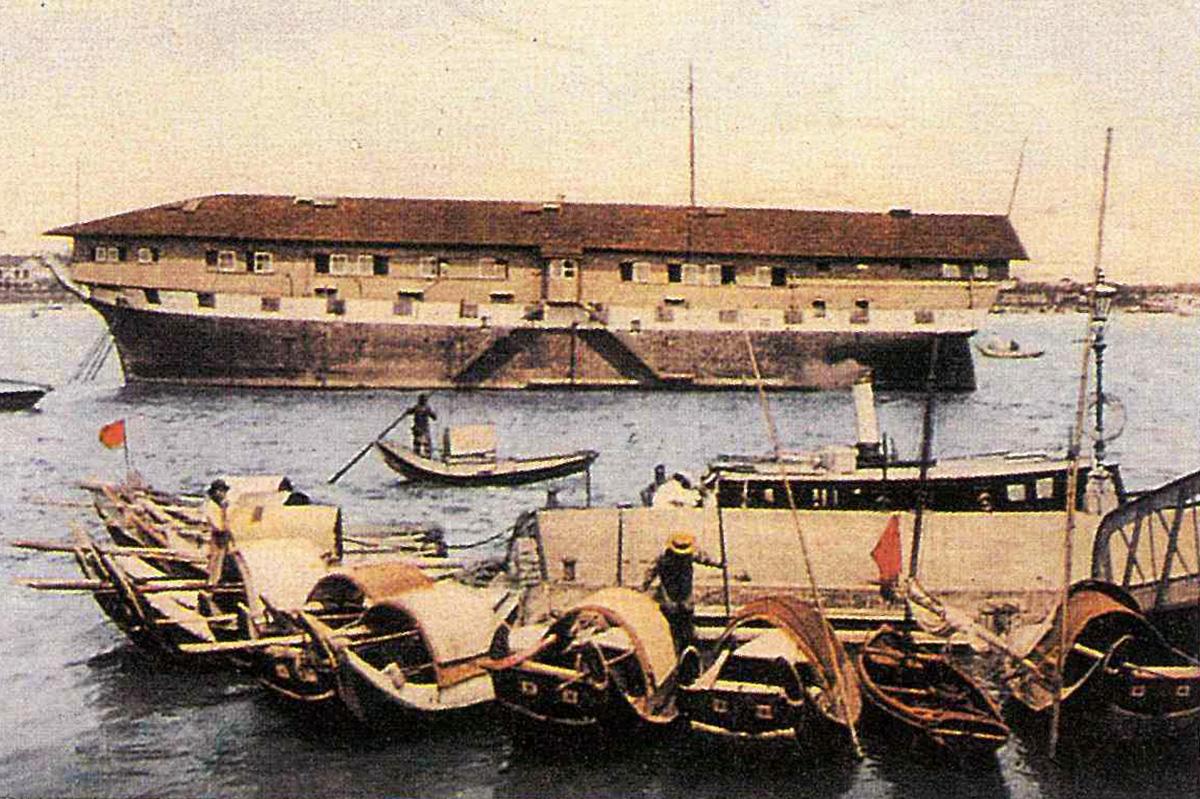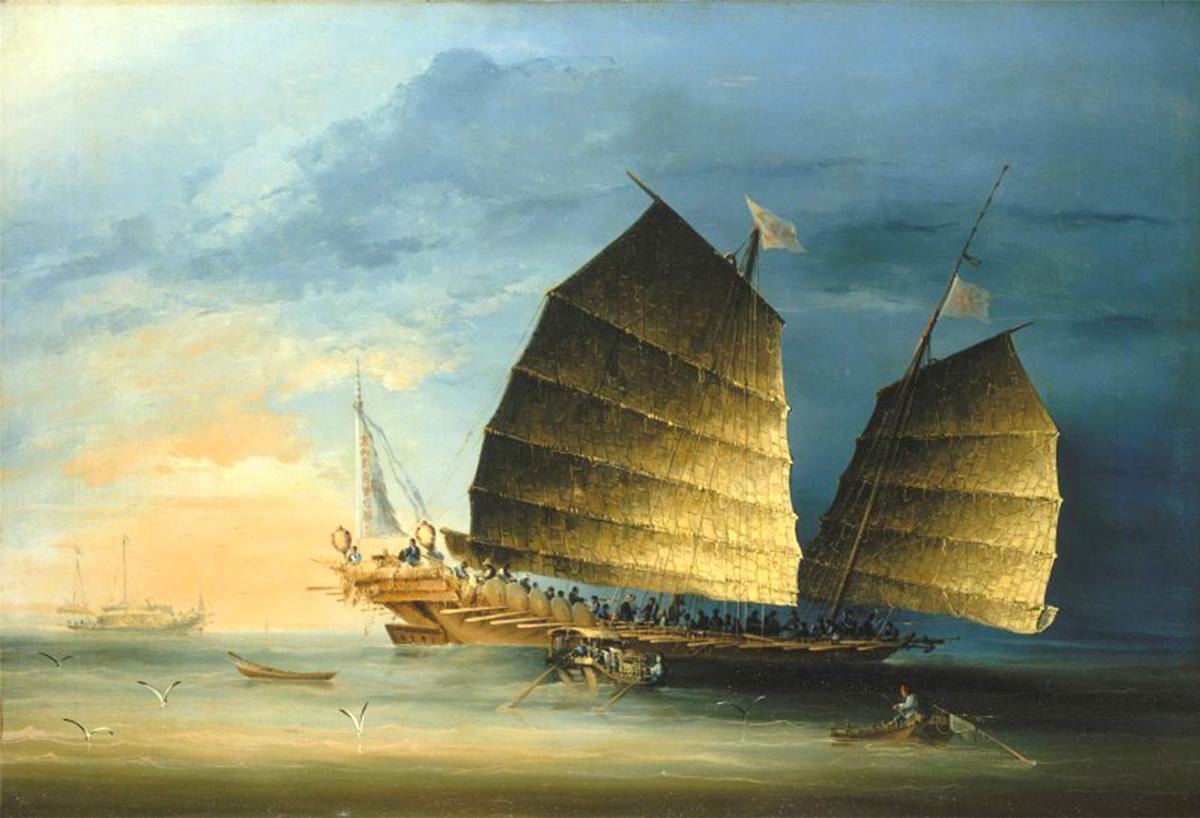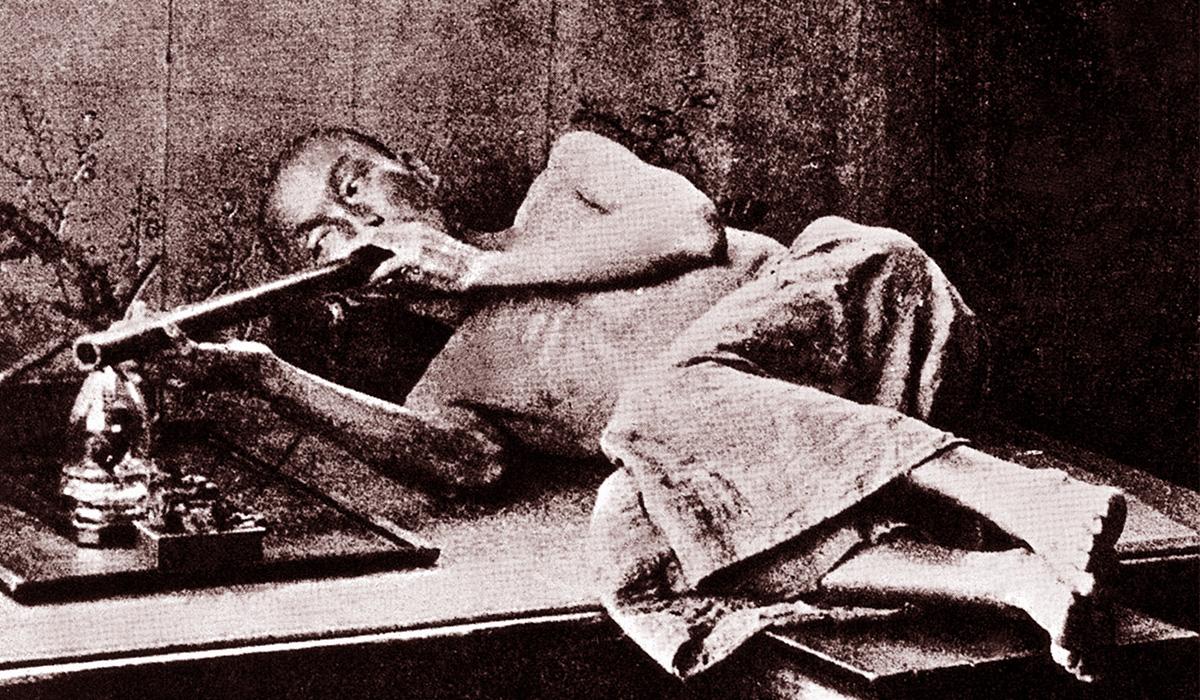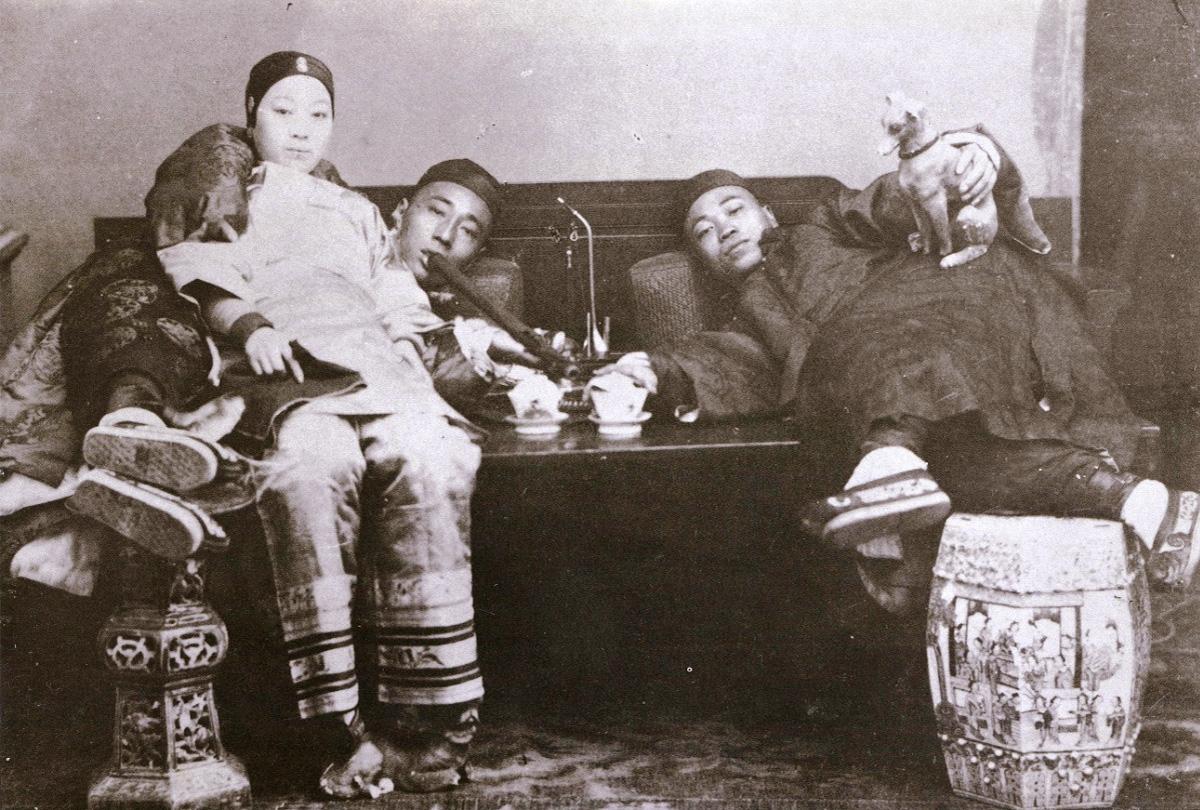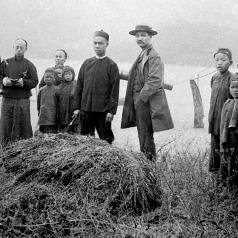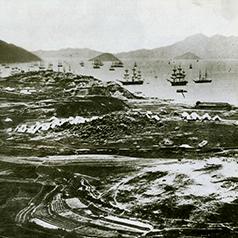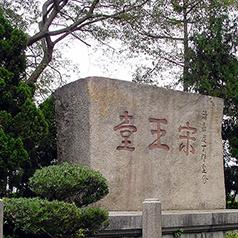Before the First Opium War, Western capitalist countries led by Britain wanted to find a commodity that they could sell and make a profit in China. At that time, the self-sufficient Chinese economy did not have much room for industrial products from Britain. To avoid losing more money from trade deficit, the British merchants smuggled opium into China to sell. China’s exponential import of opium turned Britain’s trade deficit into a surplus. Opium merchants thus made a fortune.
Foreign opium warehouse boats used to moor off Lintin Bay (or Lingding Bay, 伶仃洋). During typhoon seasons, they docked in Kumsing Moon (金星門) and Hong Kong waters for shelter. Many opium warehouse boats gathered in present-day Victoria Harbour, doubling the number moored there during the early 1820s. The slow battleships and the outdated firearms of the Qing dynasty could not disperse these fully-armed warehouse boats, turning Hong Kong waters into a hub of Britain’s opium trade with China. In 1839, a total of 22 opium warehouse boats were docked outside Humen (虎門), 16 of which were docked near Tsim Sha Tsui in the Hong Kong territory.
|
|
Why did Hong Kong become a hub of opium smuggling before the First Opium War? |
|
|
See answer below. |
A diagram showing the locations where foreign countries engaged in opium trading in China during the First Opium War. The red circle indicates Kumsing Moon, while the blue circle indicates Hong Kong Island.
Opium trading lord James William Matheson and William Jardine co-founded Jardine Matheson & Co. in 1832. Matheson was the manager of the company and the Chairman of the British Chamber of Commerce in Guangzhou (廣州), etc. Matheson Street in Hong Kong is named after him.
Another opium trading lord William Jardine, the co-founder of Jardine Matheson & Co.
William Jardine actively lobbied the British Parliament to declare war on China. He even proposed occupying an island or a port near Guangzhou. For him, Hong Kong was the ideal place. After Hong Kong was established as a free port, Jardine Matheson & Co. and the Jardine family thus developed great influence within the territory. One can tell from place names such as Jardine’s Lookout, Yee Wo Street (the namesake of Jardine Matheson & Co. in Chinese) and Jardine’s Crescent how significant both the company and family are in Hong Kong history.
From the 19th century, the quantity of opium entering China surged. The photo shows the British East India Company’s opium warehouse.
According to the available statistics, it is estimated that Britain exported on an average 4,000 chests of opium every year from India to China during the first 20 years of the 19th century. The number surged in the 1830s and reached over 35,500 between 1838 and 1839. In 1820, opium took up 10 to 20 per cent of Britain’s export to China. Its proportion even exceeded 30 and 50 per cent in the mid-1820 and 1829 respectively.
The Red Rover, a Jardine Matheson & Co’s opium clipper. It could do the return journey transporting opium from India to China three times a year.
Ships and clippers for smuggling opium near the sea of Inner Lintin Island (1830).
Lintin Bay is situated along the route where ships sailed in and out of Guangzhou. It is connected to the Pearl River Estuary, Macao, and Hong Kong. Opium ships from India mostly sailed through the waters of Lintin Bay. This sea and its neighbouring islands, Hong Kong, and Macao thus became black spots for opium smuggling.
An opium warehouse boat.
The speed and weapons of the Qing battleships were far inferior to the British opium merchant ships in the 18th century. Qing China was unable to halt the rampant opium smuggling. (Stock photo)
The skeletal addict in the photo demonstrates the harmful effect of opium on human health and lives. (Photo source: Fotoe)
Millions of people, regardless of backgrounds, smoked opium.
Opium smuggling was rampant nationwide, especially in Guangdong (廣東). Opium dens proliferated and many brothels served customers with opium. Addicts risked robbing or stealing just to buy opium. Apart from damaging people’s health and national finances, opium also exacerbated the crime rate and damaged social morality, harming Chinese society in innumerable ways.
|
|
Why did Hong Kong become a hub of opium smuggling before the First Opium War? |
|
|
These are the major reasons: 1. Hong Kong is close to Lintin Bay, which is situated along the route where ships sailed in and out of Guangzhou. It thus became a convenient anchorage for opium merchant ships before they sailed into Guangzhou. 2. The annual typhoon season of Guangdong’s coastal region was between May and October. The natural harbour of Hong Kong provided shelter for the opium merchant ships when necessary. 3. Docking the merchant ships in Hong Kong allowed foreign merchants to replenish supplies. On 4 September 1839, the Battle of Kowloon broke out between China and Britain after the Qing battleships stopped the British forceful acquirement of food supplies at Kowloon Mountain. |
Unless otherwise specified, the images in this material are provided by Professor Lau Chi-pang and Professor Liu Shuyong. Every effort has been made to trace the copyright holders and obtain permission to reproduce this material. Please do get in touch with any enquiries or any information relating to this image or the rights holder.





